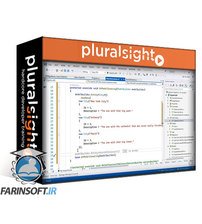در حال حاضر محصولی در سبد خرید شما وجود ندارد.

This course will teach you how to build a truly RESTful API, using deep-dive ASP.NET Core 6 concepts.
در این روش نیاز به افزودن محصول به سبد خرید و تکمیل اطلاعات نیست و شما پس از وارد کردن ایمیل خود و طی کردن مراحل پرداخت لینک های دریافت محصولات را در ایمیل خود دریافت خواهید کرد.


Securing ASP.NET Core 6 with OAuth2 and OpenID Connect

فیلم یادگیری Implementing Advanced RESTful Concerns with ASP.NET Core 3

آموزش ایمن کردن برنامه های سمت کلاینت Blazor

آموزش ایمن سازی برنامه های ASP.NET Core 3 بوسیله Credential ها

فیلم یادگیری Using OpenAPI/Swagger for Testing and Code Generation in ASP.NET Core

آموزش کار با OData v4 API

آموزش مبانی ASP.NET Core 6 Web API

C# 10 الگوهای طراحی

آموزش تست با Entity Framework Core

آموزش ساخت Web API ها برای ASP.NET Core بوسیله OpenAPI Swagger